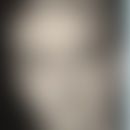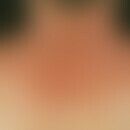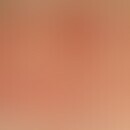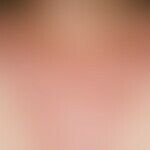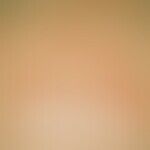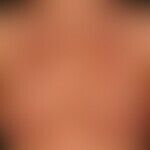Synonym(s)
HistoryThis section has been translated automatically.
Merklen, 1904; Duke coined the term "solar urticaria" in 1923 (cited by S. Goetze).
DefinitionThis section has been translated automatically.
Rare, highly acute, IgE-mediated, light dermatosis with erythema and wheals appearing within 5-10 minutes after light exposure in the exposed skin areas.
The type and severity of the disease depends on the duration of exposure, the type of sun exposure, the location and extent of the sunlight-exposed skin areas. Also known are delayed reactions of more than 1 hour after irradiation, delayed regression of > 24 h, as well as anaphylactic reactions (in case of whole body exposure) possibly with involvement of the oral mucosa.
You might also be interested in
ClassificationThis section has been translated automatically.
Some authors divide the light urticaria into 5 groups according to the UV-spectrometer that triggers them:
- type I (UVB): 280-320nm
- Type II(UVA): 320-400nm
- Type III type V: 400-800 nm
Occurrence/EpidemiologyThis section has been translated automatically.
0.08% of urticaria cases/4-8% of all photodermatoses (Navarro-Trivino FJ et al. 2023). This disease is not observed in populations with a dark-skinned population.
EtiopathogenesisThis section has been translated automatically.
IgE-mediated, allergic reaction of the immediate type to an unknown, photo-induced autoallergen; a "serum factor" plays a role in some patients It is assumed that incident light is absorbed by a chromophore. This chromophore is activated to become a photoallergen against which an IgE antibody is directed. The IgE-antibody is placed on the surface of the mast cell. The accumulation of the photoallergen results in the release of histamine and the formation of wheals.
The action spectrum can cover the entire UV range. However, the action spectrum is preferably in the UVA wave range and visible light (400-600nm). More seldom is a triggering by UVB (280-320 nm) and infrared. Some patients have a history of urticaria.
ManifestationThis section has been translated automatically.
Mostly occurring in young adults (predominantly 20 to 40 years of age), rarely in old age (7 to 8 decades of age) or in infancy (1 to 6 years of age).
ClinicThis section has been translated automatically.
Erythema and wheals appear within a few minutes after light exposure in the exposed areas. Skin symptoms subside within minutes to hours after the end of exposure. Subjectively, the patients suffer from extremely severe itching. In case of extensive infestation possible formation of shock fragments or complete shock state.
Fixed light urticaria: A special form of light urticaria is fixed light urticaria. Here the wheals develop only in certain regions of the body. The rest of the integument remains free of symptoms even after irradiation.
Light urticaria of the delayed type: here, a local urticarial reaction does not occur after minutes as usual but only after hours.
Associated diseases can be:
- Polymorphic light dermatosis
- various forms of urticaria (heat, pressure and cold urticaria)
- Churg-Strauss Syndrome
- Stevens-Johnson syndrome
- Hypereosinophilic dermatitis
Differential diagnosisThis section has been translated automatically.
The clinical picture with the acute symptoms, the detection of wheals and the clear solar distribution pattern is diagnostic.
Acute urticaria of other genesis.
Radiation therapyThis section has been translated automatically.
Careful light-hardening can be tried for patients who are able to schedule regular therapy sessions. Exact testing of the triggering spectrum, then determination of the individually suitable light-hardening. Positive effects have been achieved with systemic PUVA therapy.
Attempt at rapid hardening using UVA1.
Alternative to PUVA therapy: narrow-band UVB.
Internal therapyThis section has been translated automatically.
Antihistamines in the usual dosage are often not sufficient. Higher dosages or combinations of various antihistamines can lead to success in mild cases. Antihistamines lead to success in milder cases.
Glucocorticoids +antihistamines: In the initial phase, symptom-related emergency therapy as for acute urticaria: if necessary, high doses of systemic glucocorticoids 100-150 mg prednisolone equivalent i.v. and antihistamines i.v. (e.g. Fenistil). In case of shock symptoms proceed according to shock, anaphylactic.
Alternative: chloroquine (note: clinical effects are not very satisfactory)
Alternative: Plasmapheresis can achieve a striking improvement in the findings, especially in patients with serum factor.
Alternative immunosuppressants: In severe cases, immunosuppressants (e.g. Ciclosporin A) may be tried.
Alternative IVIG: Improvement of symptoms has been described after IVIG.
Alternative omalizumab: Experience with omalizumab, an IgE antibody, is increasingly positive. Its use is justified in cases of resistance to therapy (see Allergo J Int 2016:16). In patients weighing >100 kg, a higher dosage (450-600 mg/every 4 weeks) can be successful. In cases of treatment resistance, the use of dupilumab (at the usual dosage) could be successful (Navarro-Trivino FJ et al. 2023).
Progression/forecastThis section has been translated automatically.
Months - to years of disease progression with symptoms that are more annoying than threatening. The regression can occur spontaneously after months or years. In larger studies a complete healing of the symptoms could be proven in 25% of the patients within a 10-year period. Rarely is a severe manifestation of the clinical symptoms with shock conditions.
ProphylaxisThis section has been translated automatically.
Prescription of broad-spectrum sunscreens with a correspondingly high sun protection factor. Note: Basic sun protection measures are generally not sufficient (Navarro-Trivino FJ et al. 2023).
Long-term administration of antihistamines such as desloratadine (e.g. Aerius) 1 tbl/day or levocetirizine (e.g. Xusal) 1 tbl/day.
If necessary, trial with chloroquine (e.g. Resochin) initial dose 250 mg/day p.o., later 2 times/week 250 mg p.o.
TablesThis section has been translated automatically.
Test location |
Parts of the skin not exposed to light (e.g. buttocks) |
Test Fields |
1.5 x 1.5 cm |
Radiation sources |
UV-A: Fluorescent lamp (Philips TL09N, TL 10R) |
Metal halide lamps (340-400 nm) | |
UV-B: Fluorescent lamp (PHilips TL 12 285-350 nm) | |
Visible light: slide projector (see above) | |
Monochromator (not available in practices) | |
Radiation doses |
Mostly low, vary depending on anamnestic data! |
Reading |
Immediately, observation up to 1 hour after exposure |
Note(s)This section has been translated automatically.
Detection of photodermatosis:
- Photoprovocation test on skin not exposed to the sun (buttocks, abdomen), since chronic exposure to light increases the urticaria threshold. According to the individual action spectrum, characteristic wheals are often triggered after the light staircase with UVA and UVB has been carried out. In some patients (in larger collectives this is about 15%) visible light (slide projector) can also be provoked.
- > 90% of patients can be provoked by UVA.
- In order to determine the exact action spectrum as well as the minimum quad dose ( MUD = minimum urticarial dose), additional irradiations of 250-700 nm with a monochromator are useful, if possible (but they are not available in clinical routine).
- Alternatively, cautious (controlled) irradiation with natural sunlight can be performed.
- The test reactions are read immediately and up to one hour after irradiation.
- Serum factor test (no longer relevant in practice): collection of patient serum and irradiation of the serum with 0.1 J/cm2 UVB, 10 J/cm2 UVA or with visible light (depending on the action spectrum determined) and subsequent intracutaneous injection of 0.05-0.1 ml serum and a control with 0.05-0.1 ml 0.9% NaCl-Lsg. After 5 and 15 minutes, assess whether a wheal forms at the injection site.
LiteratureThis section has been translated automatically.
- Beattie PE et al. (2003) Characteristics and prognosis of idiopathic solar urticaria: a cohort of 87 cases. Arch Dermatol 139: 1149-1154
- Brüning JH (2016) Successful therapy of solar urticaria with omalizumab. J Dtsch Dematol 14: 935-937
- Du-Thanh A et al. (2013) Solar urticaria: a time-extended retrospective series of 61 patients and review of literature. Eur J Dermatol 23:202-207
- Duschet P et al (1989) Plasmapheresis for light urticaria. Dermatologist 40: 553-555
- Goetze S et al (2015) Light urticaria - Urticaria solaris. JDDG 13: 12501254
- Hochstadter EF et al (2014) Solar urticaria in a 1-year-old infant:diagnosis and management. BMJ Case Rep 17 PubMed PMID: 24744064.
- Kowalzik L (2016) Omalizumab for the treatment of light urticaria: still many unanswered questions. Allergo J Int 25: 16-17
- Leenutahong V et al. (1990) Solar urticaria: studies on mechanisms of tolerance. Br J Dermatol 122: 601-606
- Lim HW, Hönigsmann H, Hawk JLM (eds.) (2007) Photodermatology. Informa Healthcare USA, Inc, New York
- Merklen P (1904) Urticaire. La Pratique Dermatologique. Masson & Cie, Paris, pp. 728-771
- Nakamura M et al. (2014) Comparison of photodermatoses in African-Americans and Caucasians: a follow-up study. Photodermatol Photoimmunol Photomed 30:231-236
- Navarro-Triviño FJ et al. (2023) Treatment of refractory solar urticaria: could dupilumab fill the current gap? J Dtsch Dermatol Ges 21:652-653.
- Roelandts R (2003) Diagnosis and treatment of solar urticaria. Dermatol Ther 16: 52-56
- Schwarz T (2004) Rapid hardening with UVA1 - a new therapeutic procedure for solar urticaria. Act Dermatol 30: 55-58
Incoming links (14)
Light-hardening; Light urticaria, fixed; Mud; Photoallergy (overview); Polypodium leucotomos; Protoporphyria erythropoetica; Solar urticaria; Summer urticaria; Urtica; Urticaria light urticaria; ... Show allOutgoing links (27)
Anaphylactic shock; Antihistamines, h2-antagonists; Antihistamines, systemic; Chloroquine; Ciclosporin a; Desloratadine; Dupilumab; Eosinophilic granulomatosis with polyangiitis; Glucocorticosteroids; Hypereosinophilic dermatitis; ... Show allDisclaimer
Please ask your physician for a reliable diagnosis. This website is only meant as a reference.

